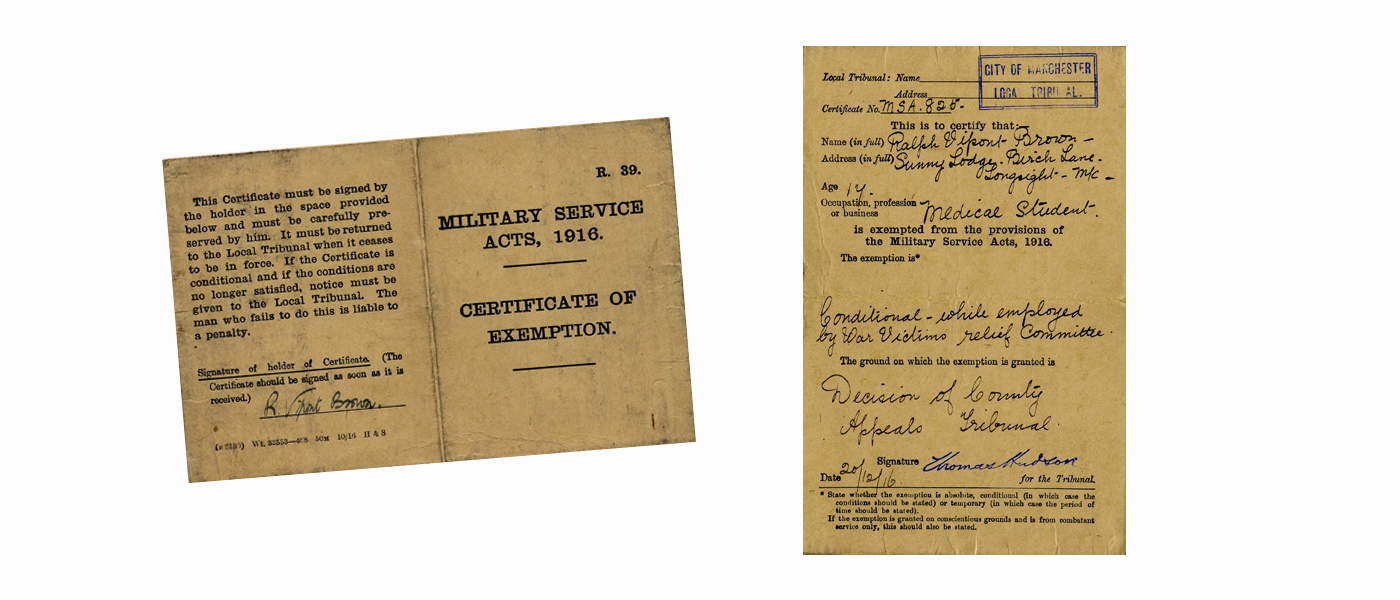A matter of conscience: Quakers and conscription
Conscription timeline
July 1915 – National Registration Act requires men and women aged 15–65 to sign up to a national register. Recruiting officers are now able to target men aged 18–45, pressuring them to enlist 'voluntarily'.
- September 1915 – Meeting for Sufferings, the representative body for Quakers in Britain, appeals to Parliament to add an exemption for rights of conscience.
- October 1915 – Lord Derby is appointed Director-General of Recruiting. Five days later a programme called the Group Scheme (dubbed the Derby Scheme) is implemented to raise the number of recruits. Men aged 18–40 could continue to enlist voluntarily or attest, with an obligation to serve if called up later.
- 27 January 1916 – the Military Service Act is passed and becomes law.
- 30 January 1916 – London Yearly Meeting issues a statement: “We regard the central conception of the act as imperilling the liberty of the individual conscience – which is the main hope of human progress – and as entrenching more deeply that militarism from which we all desire the world to be freed."
- 2 March 1916 – the Military Service Act comes into force in Britain. The Act applies initially to unmarried men, but its scope gradually widens as it is amended four times before the end of the war.
The 'conscience clause'

Quakers and Liberal MPs T. Edmund Harvey (left), Arnold Rowntree (right) and John E. Barlow led the campaign to introduce exemption to military service on the grounds of conscience. They helped to draft the 'conscience clause' of the Military Service Act, which allowed men to object to combatant service on both religious and moral grounds and apply instead for alternative service. For the first time in history individuals were granted the right to claim exemption from military service.
